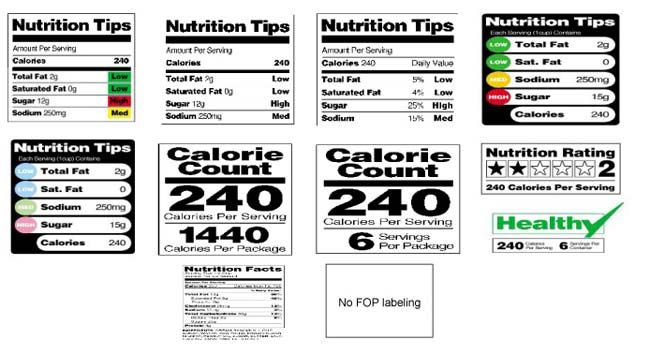Nutrition Labels on Menus Don’t Alter Habits

Letting consumers know exactly how many calories are in their food might do little to change their eating habits, a new study suggests.
The results show that, in the case of one fast-food chain in Washington, adding nutritional information to menus did not change consumer behavior after one year.
The study comes just a few months before the nation is set to post mandated nutrition labels on menus at restaurants with 20 locations or more.
The findings suggested that nutrition labels alone might do little to ease the obesity epidemic, the researchers said. Additional public health campaigns might be needed to explain how the labels can be used by consumers to manage their diet and improve health.
"Obesity has lots of contributing causes, and so controlling it will undoubtedly require lots of contributing solutions," said Elizabeth Pulos, a researcher at the Tacoma-Pierce County Health Department in Tacoma, Wash., who has studied nutritional labels on menus and was not involved in the new study. While the jury is still out on how effective labels are at helping people lose weight, as a consumer, Pulos would nevertheless like to know what's in her food, she told MyHealthNewsDaily.
The new findings also suggest that those who want to eat healthier already know which menu options contain fewer calories, so making nutrition information available doesn't change these customers' behavior, the researchers said.
Because the study looked at only one restaurant chain in one part of the country, more research needs to be done to determine if labeling might have a bigger impact if implemented on a larger scale.
Sign up for the Live Science daily newsletter now
Get the world’s most fascinating discoveries delivered straight to your inbox.
The results were published today (Jan. 14) in the American Journal for Preventive Medicine.
Nutrition labels
So far, just a handful of studies have looked at the real-world impact of displaying nutrition labels on restaurant menus. One study found no change in consumer behavior. Another found that consumers, on average, purchased foods containing fewer calories after nutrition labels were added, but it was not clear if this effect was sustained for more than one month.
To build on this work, researchers from Duke-National University of Singapore (NUS) Graduate Medical School studied the effects of implementing restaurant menu nutrition labels on consumer purchases at restaurants in Kings County, Wash., the county that includes Seattle. They limited their analysis to one restaurant chain, the Mexican fast-food chain Taco Time.
As of Jan.1, 2009, all restaurants with 15 or more locations in Kings County were required make nutritional information available.
The researchers compared the food-purchasing behavior at restaurants within Kings County to those outside of Kings County, which did not add nutritional labels.
After 13 months, they found no change in the average number of calories per transaction at the restaurants in Kings County relative to the restaurants outside of Kings County.
Fast food vs. sit-down
It's possible that labeling may have more of an effect in sit-down restaurants than in fast food restaurants, Pulos said.
"In fast-food restaurants, people often don’t take a careful look at the menu — they know what they will order when they walk in the door. I think this is less common in full-service restaurants," she said.
Requiring labels might also prompt some restaurants to change their dishes or portion sizes so the numbers don't look so scary to consumers, Pulos said.
In one study Pulos conducted, "chefs were sometimes sticker-shocked by the calories in their own meals, and made some changes. They just had no idea," she said. "If food offerings are healthier, we might eat better without having to exert a lot of will power."
Future studies should investigate how nutritional information should be conveyed on menus so it is useful to consumers, Pulos said.
Taco Time had identified healthful foods with a "Healthy Highlights" logo before the labeling was required. Perhaps, this was all the information consumers needed to make a decision, the researchers said.
"A simple logo identifying which foods are healthiest may be all it takes to convey that information to those consumers who wish to choose a healthier alternative," said study researcher Eric Finkelstein, an associate professor of health services at Duke-NUS. "The additional information appears not to have made a difference," he said.
Pass it on: Tackling the obesity epidemic may require more than nutrition labels on restaurant menus, researchers say.
- 10 New Ways to Eat Well
- Big Fat Disconnect: 90% of Us Think Our Diets Are Healthy
- 7 Major Advances Predicted for Health & Medicine in 2011
Follow MyHealthNewsDaily staff writer Rachael Rettner on Twitter @Rachael_MHND.

Rachael is a Live Science contributor, and was a former channel editor and senior writer for Live Science between 2010 and 2022. She has a master's degree in journalism from New York University's Science, Health and Environmental Reporting Program. She also holds a B.S. in molecular biology and an M.S. in biology from the University of California, San Diego. Her work has appeared in Scienceline, The Washington Post and Scientific American.











